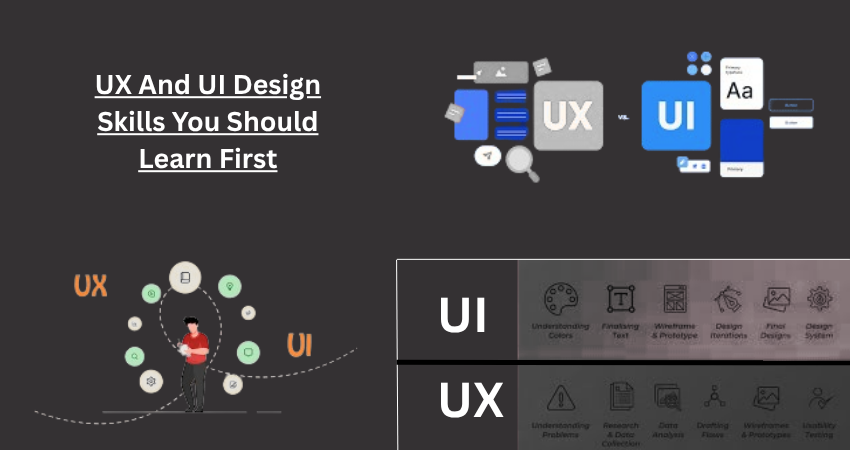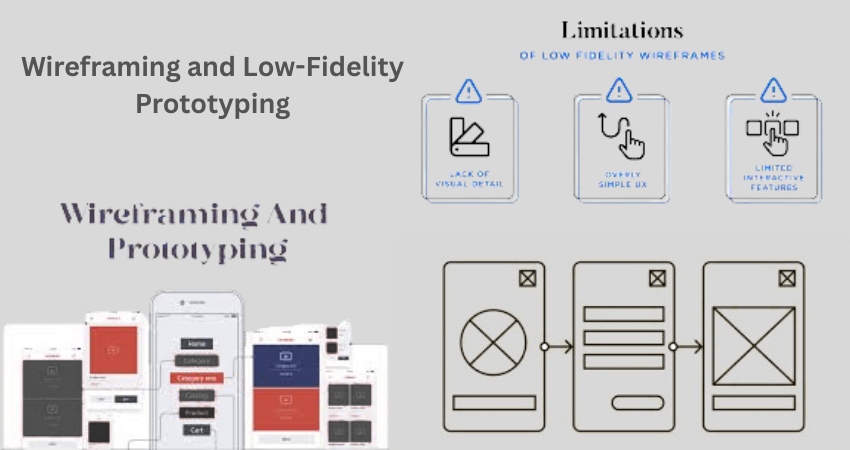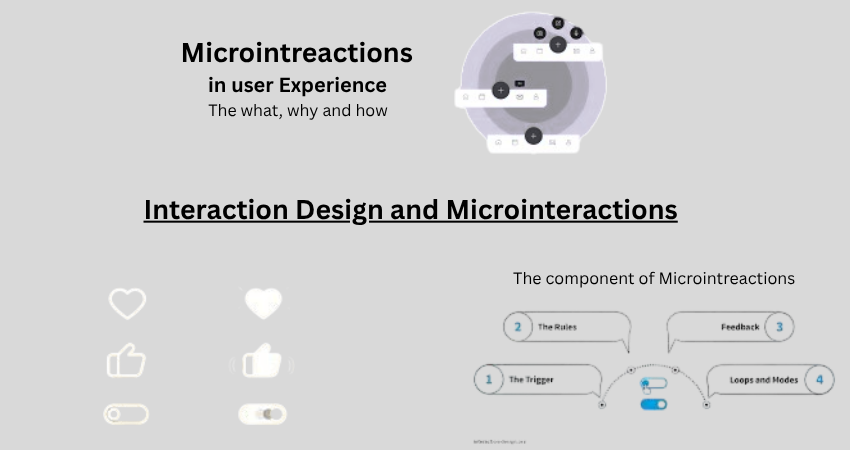
Introduction: The Value of Starting with the Right UX/UI Skills
Today, user experience (UX) and user interface (UI) design are fast emerging as critical components in the lifecycle of developing any digital products. Be it a website, mobile app, or so, the principles of UX / UI design would decide how the users would behave and feel about your product. Getting the basics right from the start may well make the difference between a flourishing product and a frustrator or failure; this is why it’s important for future designers to know where to start from. The area of UX/UI is large; curiosity will take you far, whereas focus will get you there quicker.
Most beginners get sidetracked by glitzy tools or styles, without adequate grounding in fundamentals. Thus follow poor design decisions, confusing layouts, or frustrating user experiences. It’s from found that it’s better to start with the basics, as they cut across tools, platforms, and styles; wires and ports in the user research, wireframe, visual hierarchy, interaction design, and usability testing. By this, you will have a durable platform on which to build advanced competencies. These acquisitions are not only relevant; they are forever. They will keep your confidence high in designing user-centered, effective, and professionally competitive solutions. Then, what are the top priorities on your journey when it comes to UX/UI skills?
Understanding User Research
Why Knowing Your Users Comes First
Understanding the user in-depth is at the center of every successful UX/UI project. User research is the practice of collecting insights and data regarding your potential target audience to inform design decisions. This can be through observing, interviewing, survey sending, and the analyzation of how people would spend their time manipulating other existing or competing products. This practice usually leads to incorrect assumptions that everything has to be done according to user needs but instead, it tends to be one of the very first skills that should be developed to master. Knowing your users will help you design not only a beautiful interface, but also an intuitive, workable experience that solves real problems.
There are many forms through which user research can be conducted, qualitative-such as interviews and usability tests, to quantitative such as analytics and heat maps. Beginner should train asking the questions themselves, know user personas, and understand pain points through empathy mapping. Some popular tools in these areas include Google Forms, Typeform, and Hotjar. Importantly, learning data interpretation for finding out what can inspire and hinder a user is of importance. This is from those foundations your whole design process sprouts that ensures you’re resonating with experience. A well-researched UX/UI design doesn’t just make sense; it makes sense to the user.
Practical Tools and Techniques for Research
User research can also be mastered in knowing the right tools to be used at the right time. Learn the basic knowledge of creating surveys with Google Forms, analyzing open-ended feedback, short interviews, etc. When you become an expert, you will teach yourself the most technique-savvy uses like heat mapping via Hotjar or card sorting and tree testing using Optimal Workshop. These platforms give rich insights in relation to user behavior and mental models to validate design assumptions early.
It also gives an opportunity to learn creating insights from the evidence synthesis. Since affinity mapping and persona creation are two fundamental processes to make the research result digestible and usable by teams, that is just a little of what is needed. Data by itself won’t drive design-it is best determined as to how this information is interpreted and applied. Last but not least, develop a tradition now in continuous research. Top UX designers collect feedback not in the foreground or at the end of projects but through feedback loops that put users front and center in the process. Strong research capabilities start if you begin your developing design by using the foundation built upon real needs.
Wireframing and Low-Fidelity Prototyping

Sketching the Blueprint of Your Design
Once designers have worked out a wireframe, before launching into high-resolution visuals, the design wireframes are the simplified visual guide that represents the skeletal structure of the product. Consider them as architectural blueprints. They help you organize content structure, laying the design in a user flow, free from distractions of colors, fonts, or icons. The skill of learning wireframes forces you to think functionally first, aesthetically second. This very skill is of utmost importance as it focuses on clarity, hierarchy, and user pathways before further on visual details.
Low-fidelity prototyping goes one step farther from wireframes; it creates interactive models simulating user flows. The tools used most commonly at this stage include Balsamiq, Figma, and Adobe XD. As a novice, you should practice translating ideas into wireframe sketches that illustrate how users will interact with the design, screen by screen. Also, wireframes could be tested with users early on to validate layout decisions before time is spent on high-fidelity designs, allowing that kind of quick validation to foster iterative development and capture usability issues before they become too expensive. In summation, wireframing teaches purposeful structure—two elements that every professional UX/UI designer must learn early.
Building Clickable Prototypes
Once the wireframe has passed through the prototype validation, prototype development begins, showing how the product is to operate during usability testing, prior to any coding. Performing this step helps in highlighting touchpoints, interaction testing of the UI, and recording feedback from users and stakeholders. Start with simple clickable prototypes in Figma or Adobe XD: link pages, create buttons, and mock transitions to illustrate the concept of function.
In more advanced stages of development, move on to advanced prototyping tools such as ProtoPie or Framer for more advanced animation and microinteractive capabilities. Always test your prototypes with real users to validate your assumptions. Observe them as they navigate, noting places where they get stuck and what causes confusion. Such insight could trigger giant leaps ahead before development. Making prototyping a good skill gives you bandwidth and earns you respect. Once you actually get to demonstrate how it works, you will be in a much stronger position with your design, and with a lot of clout with everyone you are working with.
Visual Hierarchy and Layout Design
Guiding the Eye Through Smart Design
Organizing and prioritizing screen elements is referred to as visual hierarchy so users can ascertain at once what they need to focus on. The beginner’s common mistake tends to give the same visual weight to all elements. This leads to total confusion and overwhelms the users. A good sense of visual hierarchy rests on principles like contrast, size, alignment, repetition, and white space. These fundamentals bring the attention of users more or less automatically and create an intuitive navigation for the interface.
The layout design is a key element in establishing this hierarchy. Grids, space, and alignment are ways of maintaining the consistency and scalability of your designs. When creating a space, the types of sites or mobile apps, consider how your content flexes through display sizes. Products like Figma and Sketch allow for responsive layout previews, making it easier for you to understand how to organize content in different contexts. As a beginner, you should practice designing interfaces that group related elements, pull attention toward calls to action, and reduce clutter. The better you get at managing visual flow, the more effortlessly and satisfactorily users will perform their jobs. It doesn’t matter what you put on the screen-it is the arrangement that counts.
How Visual Hierarchy Enhances User Experience
The visual hierarchy is one of the most important concepts for layout, especially with websites where the primary aim is to direct users through content in a logical and understandable manner. A designer can then guide the viewer’s eye through the page by positioning elements such as headings, images, buttons, and text according to the intended message or call to action. The amount of attention a given element receives, via size, color, contrast, and position, will signal to the viewer how important this object is when judged against others. To give an example: a gigantic, attention-grabbing headline placed at the top of a homepage will pull the viewer in, while accompanying supporting texts or a call-to-action button will demand interaction. In other applications, a well-conceived visual hierarchy essentially reduces friction and permits the user ultimate ease and intuitivity in absorbing information.
The barreling horse of hierarchy is something that beginners never seem to comprehend, often thinking that mere addition of information gets the job done. On the contrary, if a web page is laid out casually without much thought on its order, it tends to confuse the user, making it difficult for them to get what they want. Good visual hierarchy makes reading easier and thus increases engagement, usability, and effectiveness of the page. The coordinate heading structure (for example, the H1-H3 set), grid alignment of page elements, well-separated sections, and effective application of negative space all breed a feeling of cleanliness and coherence in a given layout. Research using eye tracking has shown how users tend to approach a web page following the F- or the Z-shaped pattern, and that color schemes and content should be staged accordingly. Well-established knowledge and application of visual hierarchy could thus provide a clear path in ensuring what needs becoming visible on the page first-inviting an action from the user-adding within the circle of a good experienced trust.
Interaction Design and Microinteractions

Designing for Action and Feedback
Interaction design accommodates how users engage with your product. Defining how elements will behave when clicked, tapped, swiped, or hovering is part of the interaction design process. Knowing about interaction design early on helps you think about user flows, transitions, and system feedback. Does the button respond when clicked? What happens when a form is submitted? In short, interaction design will teach you to anticipate user actions so that you can design accordingly. This enhances usability and gives life to the created interface, which indeed creates a difference. It includes intuitive navigation, progress indicators, and form validations.
Microinteractions are those subtleties: the tiny animations or responses that fill a user interaction with life—like a heart icon pulsing when it is ‘liked’ or a spinner rotating to show loading progress. These things may sound trivial to some, but essentially they do help tell people when action was successful, when something needs to be done, and when things are just beautiful. Newbies should start by paying attention to common UI patterns and practicing interaction mock-ups using prototyping tools like Principle or Figma’s built-in interactivity. This will serve a lot as a solid foundation to help in creating natural and responsive user experiences, instead of feeling static and confusing.
The Role of Microinteractions in Enhancing User Experience
Microinteractions are the hidden and stealthy microcosm design elements that intend to create a sense of delight, efficiency, and feedback in using a digital product. They are all the small animations, changes of states in buttons, notification pings, swipe actions, and hover effects, often responding to a user’s input. Although microinteractions look minor at first glance, they prove to be instrumental in making a product intuitive, human, and responsive. A simple loading spinner or like button might come alive with animation when you click it to convey quickly to the user that the system’s working, without further frustration. They are tiny visual indications to bridge communication gaps between the user and the system to make user experience smooth and engaging.
The best microinteractions go unnoticed, doing their magic without attention demanding. They are very subtle but meaningful contributions to usability without convoluting the user interface. For instance, turning on a switch will gently slide into a new state with color changes to indicate that something has occurred without further explanation. These feedback mechanisms also help reinforce brand identity, like Facebook’s animated thumbs-up or Slack’s friendly notification sounds. They engender an emotional connection with the product. Ultimately, if microinteractions are done right, they can easily guide users, minimize mistakes, and leave a sense of happiness so that the user will go back to it.
Usability Testing and Iteration
Why Usability Testing Is Critical to UX Success
Usability testing ranks high among the most important factors making sure that the computer product is user-centered. It requires real users to be observed using the website/app as a means of discovering friction points, errors, or inefficiencies in user experience. Designers and developers may think of a product as intuitive or functional; actual users might present insights that were not anticipated during design. It could be something trivial- like an unexpected button position- or as important as a breakdown in a navigation flow. Thus, validating design decisions helps promote an end product that truly reflects user expectations and behaviors, thereby validly aggrandizing the brutal results that often arise from assumptions underpinning that poor experience.
Besides being a continued upgrading process, usability testing is not a one-time exercise. Early and frequent testing provides teams with opportunities to detect problems before they become expensive fixes later in development. The testing can be conducted using a variety of methods, including in-person usability tests, remote testing, A/B testing, and the use of heatmaps. Each of these gives rather insights into the users’ Behavior and opinions that flow back into the design refinement process. In a highly competitive online environment where users might leave a site in seconds if confused or frustrated, usability testing is a sine qua non in UX design. It enhances user satisfaction and retention, leading to business success and higher conversion rates.
Improving Designs Through User Feedback
The prototype must be validated, and this is where usability testing comes in. Usability testing usually means watching people in the wild as they struggle with your design, pointing out confusion, friction, or inefficiency. A beginner must realize that this process could turn out to be a life-changer for him: one just has to assume that design is user-friendly; but testing in the real world often puts the finger on blind spots. Knowing how to carry out an effective usability test is one of the best skills that would give you the power to improve your work based on concrete data.
Start small. Run usability tests with friends or colleagues or even use remote testers. Create tasks for them and watch where they struggle or where they succeed. Remote testing is facilitated and analyzed with tools like Maze, UsabilityHub, or Lookback. Most important: take in the feedback, even if it goes against your assumptions. The point is not to defend your design but to improve it. Iteration is a part of the design process, and the faster you adopt it, the better your designs will become. Keep in mind: design is never finished—it’s just evolving with the feedback and refinement.
Conclusion: Start with Strategy, Build with Empathy
It requires time to become proficient in the UX/UI design process since it is complicated. Knowing where to begin helps to enhance the learning process. Start with user research to develop empathy, then wireframe to organize your ideas. Beyond that, keep working on visual hierarchy and layout design to guide your users intuitively. Along with interaction design and microinteractions to drive usability and feedback, add usability testing in the mix to sharpen your skills in a real-world context where you will assess and validate your designs.
By gaining solid foundational skills, which you would be mastering in the desirability field of UX/UI design, you would actually be developing a potent design mindset that embraces empathy, clarity, and user success. Methods and tools may change with time, yet these very skills will hold their strength into any uncertain future. These core UX/UI skills provide you with a fertile ground for designing products that not only look quite appealing but also work perfectly. No matter if you are starting, or if you’re looking to pivot from a completely different area of interest, these UX/UI skills form the basis upon which you will hone designs that not only look fabulous but also work like magic.”